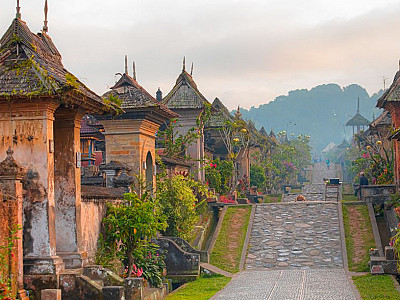Largest Forest Area #8: Indonesia is Still Struggling to Meet Global Carbon Credits’ Needs
Learn Indonesia's Efforts and Struggles to Fulfill Global Carbon Credits Demand



To ignite tourism and the country’s economic recovery, the Indonesian government is continuously exploring various options and alternatives. One of which being community-based tourism, or also known as village tourism. This concept has been around since the enactment of Village Law back in 2015, but when the COVID-19 pandemic hit the nation, domestic village tourism, offered an alternative path to Indonesia’s tourism industry.
Then again, just how sufficient can village tourism be?
Nowadays, many villages are claiming to be part of village tourism, and yet when we look much closer, they are merely a form of tourist objects that are located in a village. What village tourism actually entails is the presence of a community within a limited area under management. The members or citizens of that community interact with each other to empower themselves and develop tourism in the area. This can be done by highlighting their area’s natural attractions, cultural exchanges and gastronomy, as well as other local activities that people can only experience by visiting the village. Once the village is developed and ready to be visited, it is widely called as “desa wisata” or tourist villages.
Currently, there are 1,838 tourist villages across Indonesia, with the most located in Central Java at about 353 villages. This number has been increasing from 126 in 2016 to 384 in 2020. Once the villagers realize that their area can attract visitors and generate additional income, their perceptions shift, making them proactively protect the beauty and culture that their village holds.
To help tourist villages across the Indonesian archipelago develop, the Ministry of Villages, Disadvantaged Regions, and Transmigration allocated 72 trillion rupiah in 2021. Additionally, the ministry will train the villagers to better manage the funds and assist in creating new specialty products and tourist attractions.
The result of this is astonishing. Karangbanjar Tourist Village located in Central Java managed to attract more than 8000 domestic tourists last year with its beautiful camping grounds and traditional culinary options, generating 147 million in income. Another village that has reaped the fruits of this tourism development is Budo Village in North Menahasa. Within 3 months, the village’s income increased to 250 million rupiah from a mere of 50 thousand rupiah. This success is due to coaching sessions carried out by students from Manado State Polytechnic, one of the state universities located in Manado City.
The domino effect of village tourism is essential in improving the quality of the surrounding environment, community welfare, and cultural preservation. As tourist villages continue on progressing and getting the attention of many visitors, the development of rural areas is expected to accelerate while reaping impressive income.
Want to know more about other developments within Indonesia’s tourism industry? Check out our services and contact us to be connected with our expert network!
We will give you updates of our latest news
Learn Indonesia's Efforts and Struggles to Fulfill Global Carbon Credits Demand

Get to know more about nickel's major role and uses in our everyday lives.

See must-know facts related to carbon credit and the market in Indonesia

Askpert.id's Expert Speaker, Mr. Alan Syahputra, guided Growpreneur by BRI finalists on how to leverage online and offline channels for beauty and wellness business growth.
